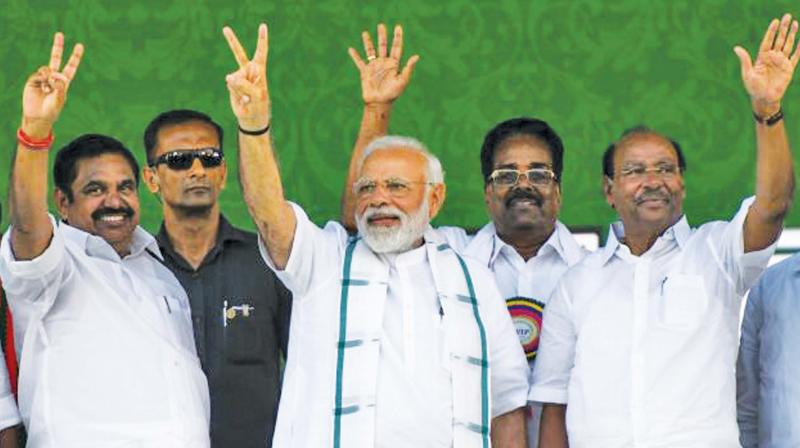North-south divide could sharpen in open election
The 2004 election was said to be a shoo-in for the Vajpayee-led NDA but that didn\'t happen either.

This is a most open election. The last one, in 2014, wasn't. Even the 2009 election was forecast to be one-sided, but it surprised the pundits by electing the party-alliance that was not that much favoured. The 2004 election was said to be a shoo-in for the Vajpayee-led NDA but that didn't happen either.
You look at it any which way, it still pans out that the 2019 election will be a very open and unpredictable one. First, there is no wave like last time when the Modi magic had the nation spellbound. The Modi wave is not there this time, nor is there a Rahul wave to say there is a good chance of a total swing of the pendulum.
The only certainties are that the BJP, impressive winner of the 2014 elections with the first single party majority in 30 years, would be hard pressed to it to repeat that performance. While there is no wave in favour of its charismatic leader this time round, the party might be up against it in south India where a kind of anti-wave seems to be in motion in most states.
Save for Karnataka, it might be a blank election for the ruling party in the south. The warning bells may be ringing about forecasting elections. While psephologists have been proved wrong often enough, even the exit poll pundits are swimming against the tide these days considering how often they have been wrong in translating small surveys of voters into seat projections.
If the south becomes a virtual washout, it is obvious that the ruling party must bank on the north to bring it to power once again.
It was a bit of a miracle that in the last round of national polls, the BJP-NDA did not need the 37 MPs Jayalalithaa sent to Parliament, winning seats for them on her charisma alone in a stellar performance by a strong leader who decided to dump all allies and go alone into the poll.
A clutch of 37 seats from any state this time would be a goldmine for anyone trying to form the government. The point is, any party with close to 40 seats could end up playing kingmaker in 2019, so open does the poll look though the first defining point of the election would be to determine which national party emerges the single largest to stake a claim in our first past the post Westminster style elections.
In its five years in power, BJP did not manage to shake off its north Indian party image those south of the Vindhyas think of it as. The natural calamities that took place in the south did not seem to elicit sufficient empathy from New Delhi. The national and central institutions like the armed forces and the disaster relief forces carried out their rescue and rehabilitation work meticulously. There was not enough sympathy from the political crowd.
Why, even the peripatetic PM did not so much as visit the Gaja-affected districts for even an aerial survey. The Kerala floods did seem like a man-made disaster even as they began as we Chennaiites could make out from our earlier experience in 2015 when the mismanagement of just one dam led to that huge calamity of lives lost in Chennai and livelihoods dampened.
For those on frequent flyer programmes, trips down south are a kind of weekly shuttle trips. Even so, not too many top guns were seen to be keen to fly down to check why Gaja was such a huge catastrophe when only the wind seemed to blow while the rainfall was little.
The same was the case with the man-made tragedy in the Thoothukudi Sterlite firing incident, which many saw as a capital-inspired event. There too, no one of national importance turned up to even share the grief of the locals.
By being alienated from most of the south, the ruling party has little to expect from Tamil Nadu & Puducherry - 40, Kerala - 20, Andhra -25 and Telangana -17. Even a decent share of Karnataka's 28 seats is unlikely to compensate for a southern washout. The clear north-south divide is even more sharply defined than usual, which can only upset the national numbers of 2014 because defying the anti-incumbency factor in the north without any comfort from the could be a big factor ranged against the ruling forces.
The twin positive vote gathering factors of 10 per cent quota for the poor and the military response to Pulwama terror would have to compensate for the poorer showing in the south where Pakistan is not as much of a bogey as it would seem up north. The pre-poll surveys, which are as reliable or unreliable as ever, seem to show the enormity of the task facing the BJP in the south.

